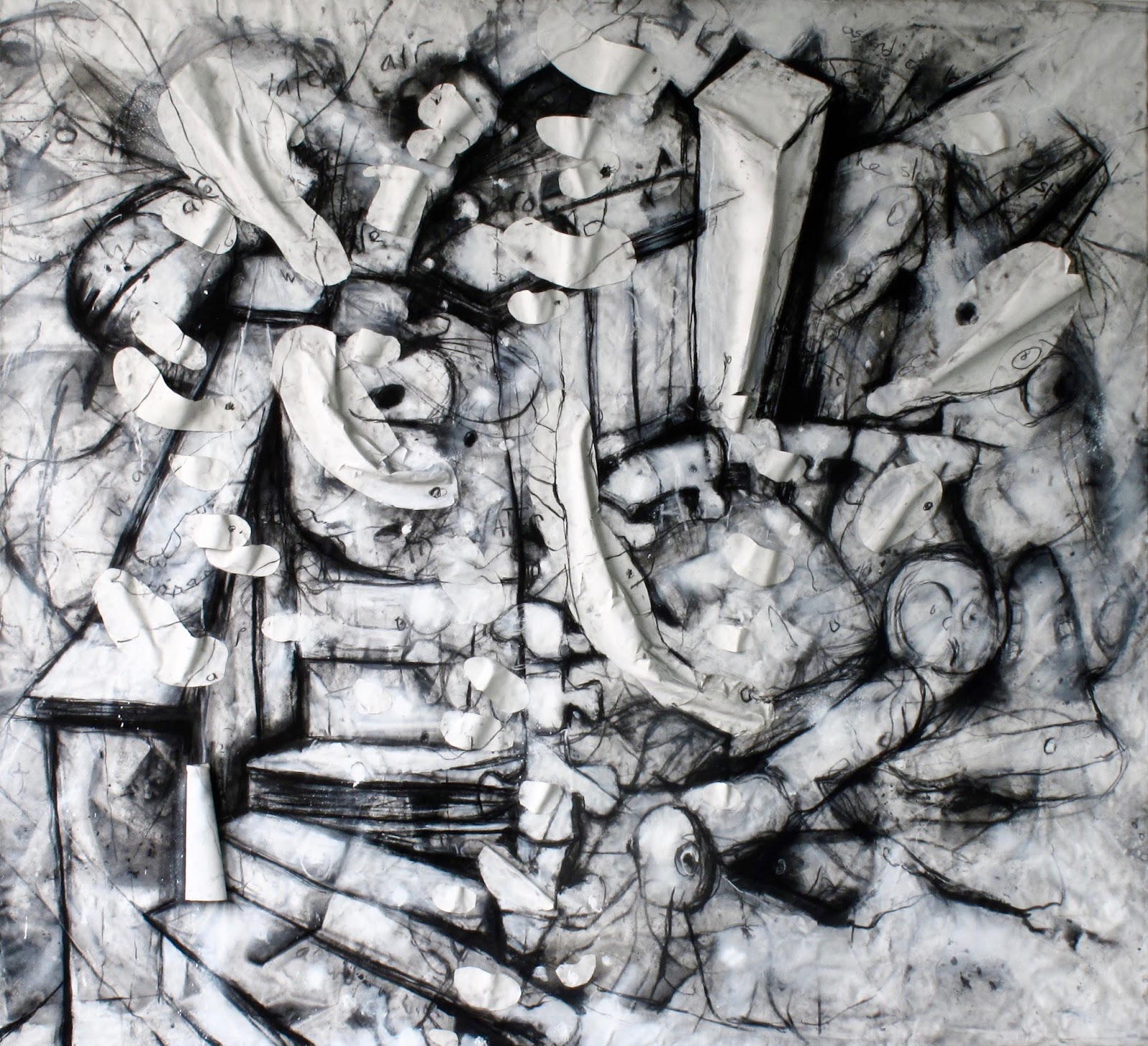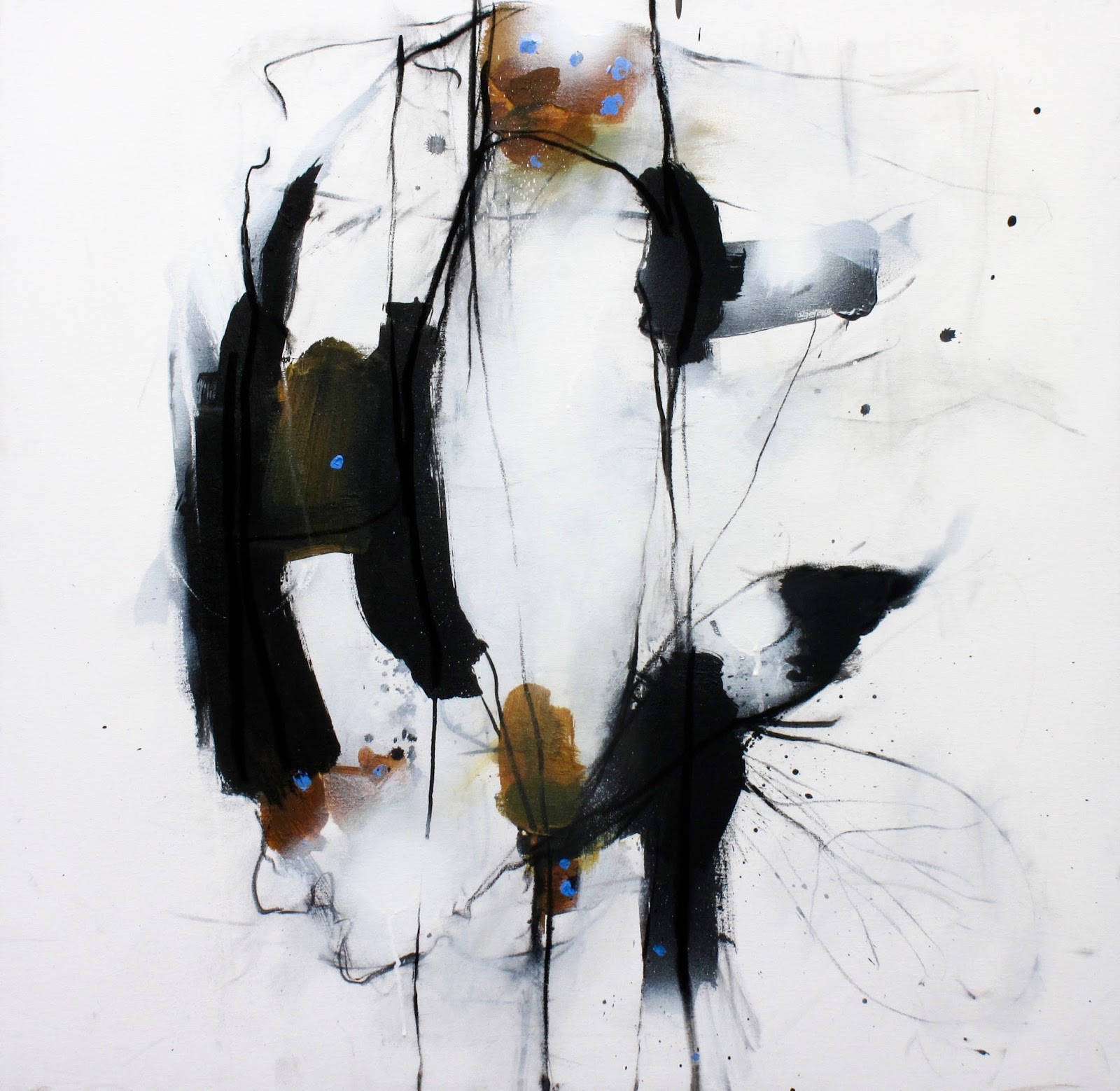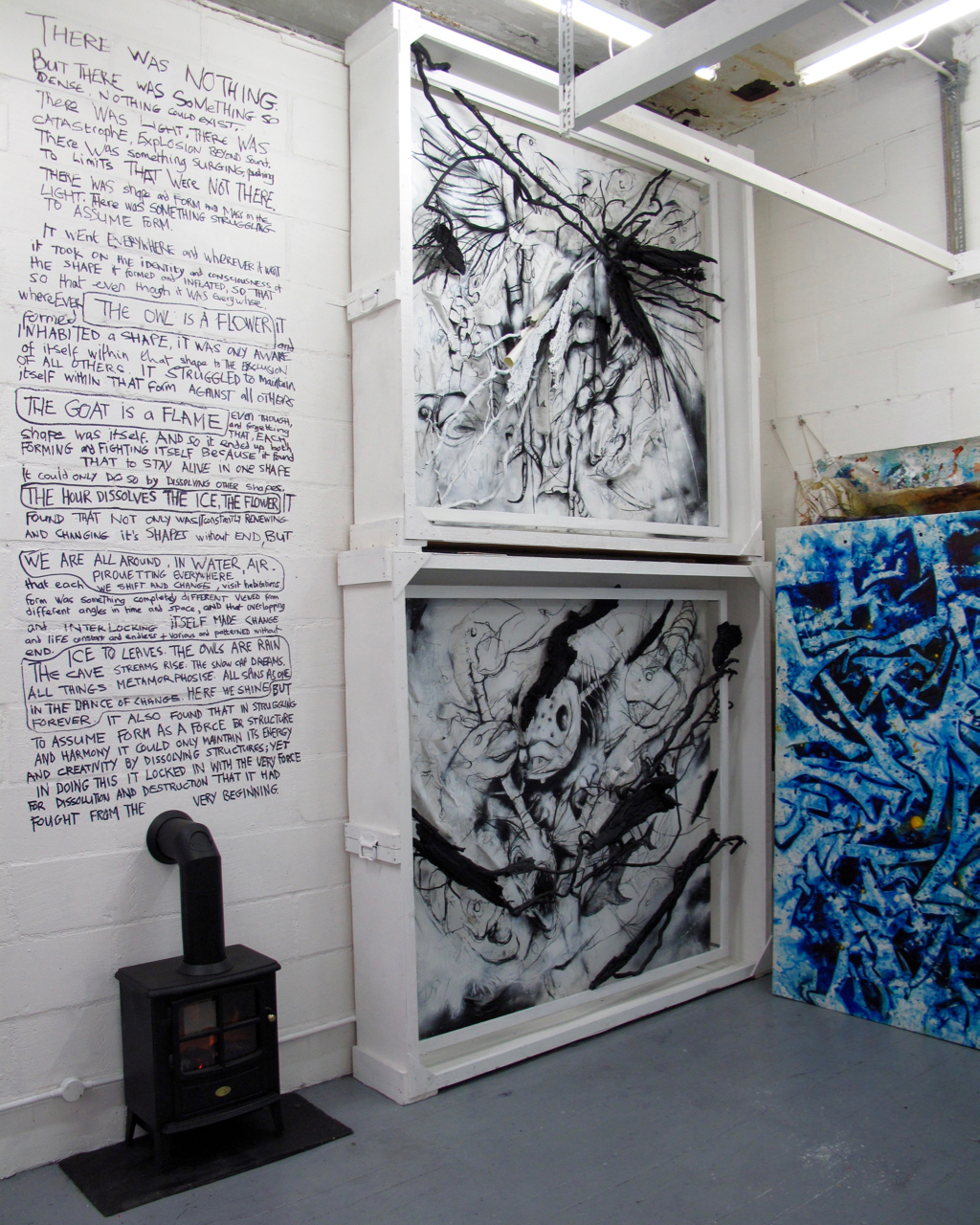06/05/07
Q&A with Nick Malone
Anna McNay: You started out as a writer and
have published a couple of books. At what point did you decide to start making
visual art?
Nick Malone: I went to art college as a mature student. From a very early age, I’d really wanted
to be an artist, but I took my A-Levels too early at 16 and gave in to pressure
to go to university rather than art college, as I had an interest in writing as
well at the time. So, initially I was a writer and supported myself with an
academic career, although I did illustrate my own books. I had some success
with the writing, winning prizes and getting some great reviews, and I had the
opportunity to travel. I’d always wanted to live abroad for a time and went as a visiting professor
to Thessaloniki University in Greece and then Wisconsin University in the
States, but that was in the field of contemporary literature, not art. However,
the drive to be an artist was so compelling that I decided I had to go to art
college. So I gave up everything and went, which, at the time, felt a rather
scary thing to do, but I seem to have got away with it. Initially, I got a
couple of businesses going to help fund things, which I supplemented with some
activity that was very much on the edge. I do sometimes wonder whether putting
myself on the line like that in a rather dangerous way was a kind of atonement
for not having stood up for myself at 16, given that I always knew art was what
I really wanted.
Initially, I went as an undergraduate to St
Albans School of Art, on what was then a new degree. The course was great –
they tried really hard. Their spiritual home was New York in the 1960s –
Jackson Pollock and so on – but they were honest about this and, to be fair,
they did invite in visiting lecturers from a very wide range of backgrounds. And
they were ambitious in approach, which is a good attitude in art practice. The
only drawback, in retrospect, was that their involvement with high modernism
prohibited anything that had narrative or could be described as illustrative in
any way. So I developed a pronounced sense of depth and possibility in the
materials, but a whole side of me that dealt with story and speculation was
repressed. It was only later that I learned to combine the two. I had intended
to do an MA at the end of the course, but I was approached by galleries before
I graduated, and I was tired of getting certificates, so I decided just to get
stuck straight into painting.

Has your work always been mixed media and
incorporated words as well as imagery?
No. Initially, alongside my involvement with the
materiality of the paint, my first serious work emerged out of the cruciform. A
lot of my training was very classical – my father was a portrait painter and I
spent years working from the model. For a time, I had a studio in the West
Country, and the elemental shapes of surrounding prehistoric trilithons somehow
merged in my mind with the shape of the model with extended arms. I was very
involved in work with the landscape at that time, so the T-shape became a way
of organising the picture plane, with the top line of the T becoming the
horizon line. It provided a very elemental structure within which to work, but
even then I was dealing with ambiguity. A lot of those works are called Marches or Margins.
The ‘marches’ in medieval
times were a kind of no-man’s land, where you weren’t quite sure where Wales started and England
ended. The works were deliberately elusive. Were they marine or terrestrial?
Were they dealing with decay or resurgence?
This approach formed the basis for the exhibition
Balkan Earth, which I put on for the British Council to celebrate their 50
years in Greece. It led to a very creative vein and a lot of corporate sales.
Then I suddenly became aware of the danger of my work becoming formulaic. I
couldn’t see a canvas without painting black lines. I grabbed a manuscript
that I’d thrown into the back of a drawer before I went to art college and
wrote the text on the canvas round and round in a big circle, so I was forced
to change how I worked. And I decided to do that MA after all because I
realised that I’d been out of all critical debate for the last 10 years. This time,
I studied at Central St Martins, which was then highly theoretical, so I
decided to reinvent myself. I brought in the writing and ideas I’d previously
suppressed and moved towards paintings that were non-hierarchic and
non-structured, where chance could play a huge role.
Was that when you started to pour the paint
on to the canvas?
Yes. I began doing things that were
uncontrollable, putting down bits of wood underneath the canvas, and pouring
liquid acrylics from a height to create a 3D landscape – mountains with valleys
of paint – and I then intervened with marks and writing. I started to see
figures and elements I’d been thinking about for a long time – they were there
by chance, but I began to perceive them and pull them out.
Around this time, I also received a grant from
Arts Council England to complete a book I’d been working on some years
previously that engaged in different ways, through adventure and poetry, with
issues that run through all my art practice – an inner mythology operating
within a wider context of visual dynamics, dissolution and change.*
A few years later, I extended this approach,
effectively drawing three-dimensionally in wood to create a third space between
sculpture and drawing. This presents different planes, dissolving and providing
ambiguous visual armatures, which allow engagement with these issues in new ways.

Where does your interest in ambiguity stem
from?
Early on, I started corresponding with the
writer and critic, William Empson. In fact, he wrote the introduction to my
first book. When I met him, he was a grand international man of letters who’d
changed the course of 20th-century literature with his book Seven Types of
Ambiguity. Later on, I transferred some of these ideas from literature to
painting, although I didn’t foresee that at the time.
I think his approach anticipated deconstruction.
You can deconstruct something this way, but you could also do it another way,
and so forth. The experience of being influenced by somebody in literature may
show now in my general ideas of ambiguity – and, from that, in approaches to
change and metamorphosis. Here we are, sensate blobs of jelly in this inchoate
cosmos – how do you make sense of it? I don’t know why it’s important to me
to do this, but it is. Everything is changing all the time, a life force
pushing its way into different forms. Each form has its own identity and is
trying to protect that, but then it consumes or dissolves into these other
forms as one massive cycle. Bacteria decomposing the tiger corpse, and so on.
Everything only exists through ambiguity, metamorphosis and change. It may be
seen like this, it may be seen like that, but finally it exists only as an act
of perception – the owl is a flower, the goat is a flame.
How did the idea of creating a graphic novel
come about?
Graham Crowley, a highly significant artist who
had been Professor of Painting at the Royal College, suggested it: ‘Why don’t you write a
graphic novel about your life?’ At first, I didn’t take him seriously,
but, as I thought it about, I realised the genre had changed and was no longer
just like Batman and so on. Graham
referred me to a graphic novel by Richard McGuire, called Here, which
uses the device of windows, to show exactly the same place at different points
in time. You can cross timelines and even go back to prehistory. Apparently he
got the idea from Microsoft developing Windows. I was attracted to what he was
doing. I produced a timeline of my life, but the way that I constructed it was
to make it a thriller or detective story, centred on the disappearance of my
childhood friend, Makepeace, who personifies that part of us that constantly
opens trapdoors of imagination; by cutting windows in the pages, the inner and
outer worlds of our life look out to each other through the book.

It is a compelling read, and part of me wants
to ask you all about it and try to elicit which parts are true and which are
invented, but part of me feels that would be too disingenuous, and would also
spoil the lasting enjoyment of the story.
Well, there is a sense in which it is all true.
Even the bits that are manifestly not true are true in a metaphorical sense. In
a way, therefore, it’s just a trope with which to engage, but, at times, the
excitement of the narrative takes over – it’s all true in
imagination. Fundamental to everything is that any significant work can cross
art forms and allow for endless revisiting and reinterpretation.
*Jason Smith’s Nocturnal Opera, published
by Cinnamon Press, 2007
Published in the catalogue to accompany Nick Malone: A Tale of Two Lives at Art Bermondsey Project Space, 14-25 March 2017
Also available on Nick Malone’s website
Images all © the artist:
Ascend on light the sleeping stair
2016
charcoal, acrylic and wood on canvas
Disappearance I
2016
charcoal and acrylic on canvas
Nick Malone’s studio, 2017